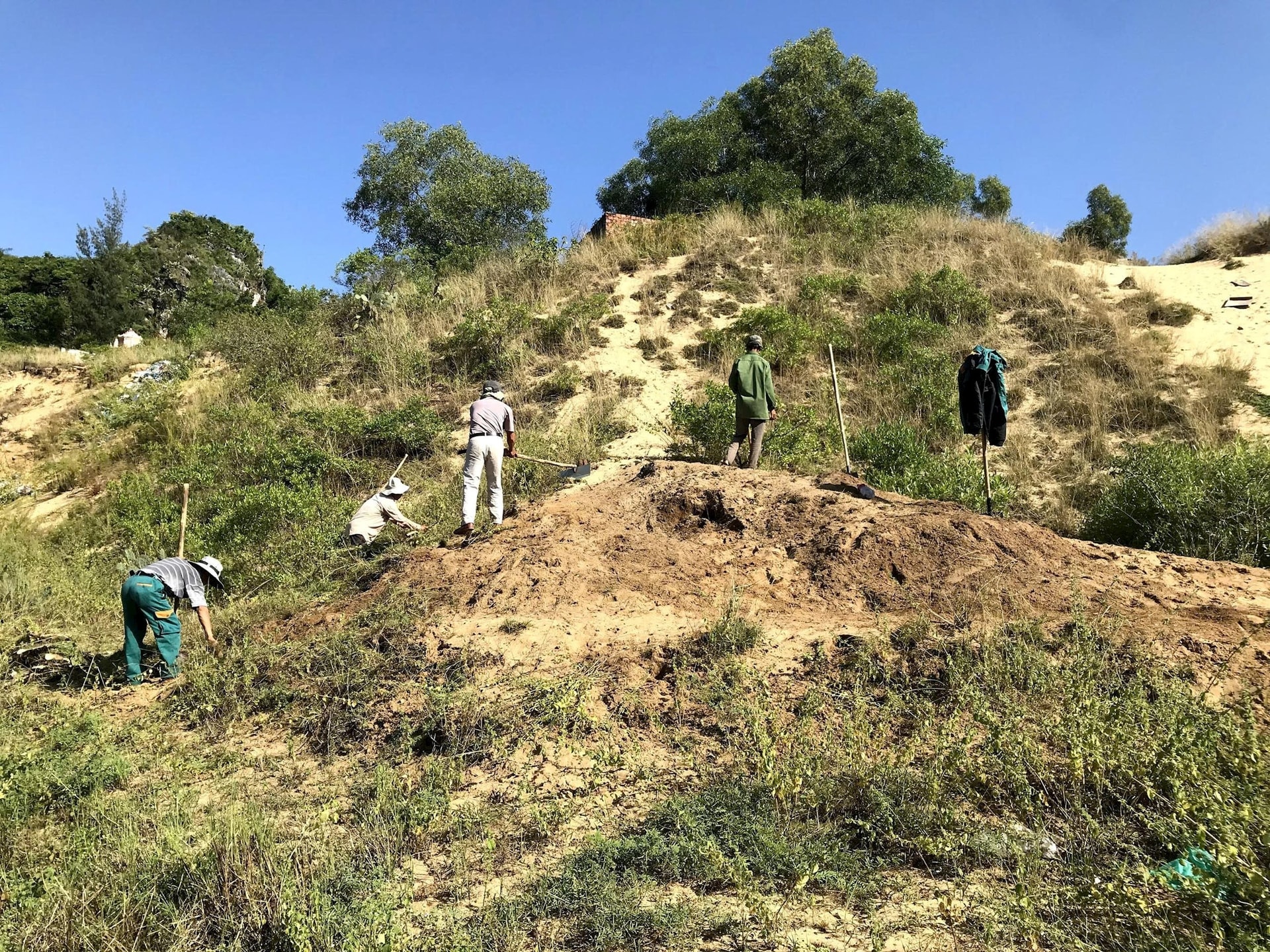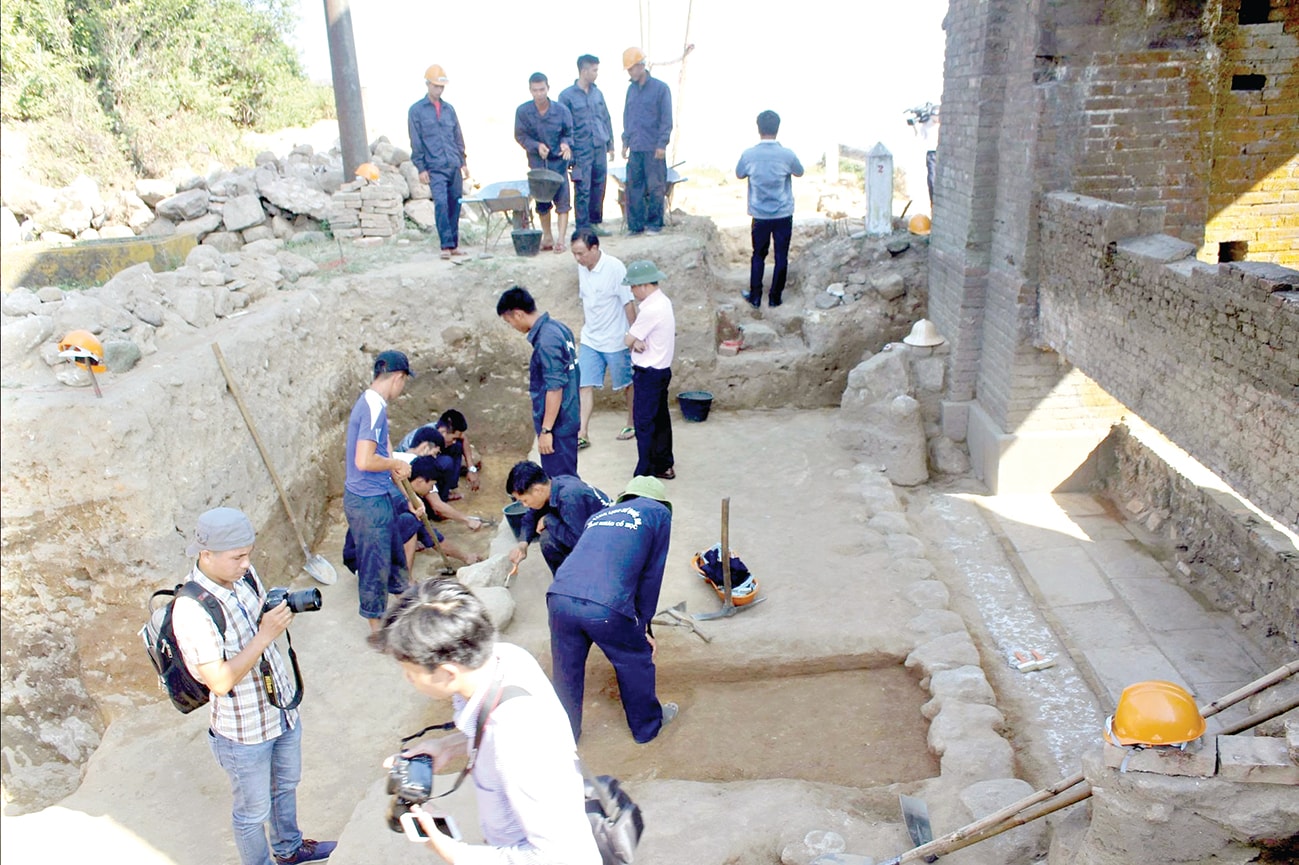
Turn the page of the book of earth, light the page of the book of life
“The slogan, which is also the motto of us, the museum workers, is encapsulated in a few words: Turning the pages of the earth's book, brightening the pages of life's book.
Because only through archaeology, tracing the traces left by our ancestors and history, can we see and understand what once existed, the basic values that the ancients left behind on this land.
Through that, we and future generations have a basis to understand the cultural history and social life of previous generations, and to restore the foundations and structures associated with each relic," explained Mr. Huynh Dinh Quoc Thien - Director of Da Nang Museum.
Over the past 20 years, Da Nang city has paid serious attention and invested in museum conservation as well as coordinated with other localities to "uncover" many cultural relics.
The archaeological and specific surveys of important works and relics lead to conclusions for successful planning and restoration of cultural heritage.
For example, at the Hai Van Quan project, the coordination of the cultural and historical sectors of the two localities of Hue and Da Nang helped organize a number of surveys, geological separation, and search for artifacts at the relic.
The old foundations of many past constructions and reconstructions have been discovered, serving as a basis for successfully redrawing and restoring the appearance of the defensive structures at the site.
At the first Dien Hai citadel archaeological project, the Da Nang cultural sector surveyed and re-explored the entire area of the citadel and moat, clearly defining the perimeter of each foundation built during the Minh Mang period, only then could we clearly determine the bases to help restore the works, the exact location of the entire architectural structure of the citadel, and clearly set out the requirements for further research.
“It is archaeology that allows us to make accurate assessments of the times, situations, and contexts of such works and relics, and when using scientific knowledge and archaeological techniques to explain, many issues have been clarified. Turning over the soil, seeing the life buried in the soil, doesn’t that help us know our own lives?”, Mr. Thien said.
Need a big responsible vision!
In fact, in recent years, Da Nang has organized on average 1-2 surveys and archaeological excavations in the area under its management. The new city after the merger today needs to have a greater vision and responsibility.

Mr. Huynh Dinh Quoc Thien emphasized that it is necessary to soon have a comprehensive archaeological plan for the new city area, paying attention to valuable relic and heritage areas, to clarify issues related to historical conservation and exploration.
Provisional statistics from the Da Nang Museum show that, after the merger, Da Nang has a very large amount of heritage and museum status. The community heritage spaces in Hoi An, Chien Dan, My Son, are only the surface of the cultural and historical management.
Da Nang currently has 2 cultural heritages, 1 world heritage (Bai Choi), 1 documentary heritage (Ngu Hanh Son stone stele), 1 natural cultural park (Cu Lao Cham); 8 cultural heritages, 84 relics and 19 national treasures; and 476 city-level relics...
Source: https://baodanang.vn/dat-khao-co-vao-vi-tri-nen-mong-3300874.html






![[Photo] General Secretary To Lam receives the Director of the Academy of Public Administration and National Economy under the President of the Russian Federation](/_next/image?url=https%3A%2F%2Fvphoto.vietnam.vn%2Fthumb%2F1200x675%2Fvietnam%2Fresource%2FIMAGE%2F2025%2F12%2F08%2F1765200203892_a1-bnd-0933-4198-jpg.webp&w=3840&q=75)











































































































Comment (0)